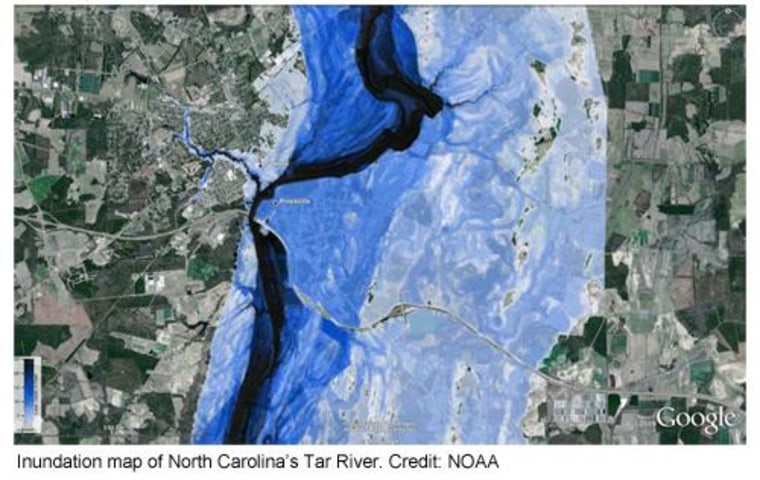Researchers are gearing up to test a water level prediction system this weekend as Hurricane Irene approaches the coastline.
The U.S. National Oceanic and Atmospheric Administration (NOAA) will produce total water level simulations in North Carolina during Hurricane Irene that aim to improve forecasts for inland and coastal flooding events to help people react, respond and recover.
Called the Coastal and Inland Flooding Observation and Warning (CI-FLOW) system, it aims to capture the complex interaction between waves, tides, river flows and storm surge to collect observations that can be used in an interactive exchange between atmospheric, river and ocean models.
Researchers and forecasters can access real-time simulations of coastal water levels for the 2011 Atlantic hurricane season on a secure website.
CI-FLOW will be focused on the Tar-Pamlico and Neuse river basins of North Carolina, but the goal is to expand it to other U.S. coastal watersheds.
The National Oceanic and Atmospheric Administration isn’t the only one testing flooding technology. Researchers from IBM and the University of Texas at Austin are applying advanced analytics to river systems, weather and sensor data, to predict the river behavior days at more than a hundred times the normal speed.
The technology could help provide up to several days' warning of a flood, allowing more time for disaster prevention and preparedness.
The team is presently applying the model to predict the entire 230 mile-long Guadalupe River and more than 9,000 miles of tributaries in Texas. In a single hour, the system can currently generate up to 100 hours of river behavior.
Floods are the most common natural disaster in the United States, but traditionally, flood prediction methods are focused only on the main stems of the largest rivers – overlooking extensive tributary networks where flooding actually starts, and where flash floods threaten lives and property, IBM noted.
The new flood prediction technology can simulate tens of thousands of river branches at a time and could scale further to predict the behavior of millions of branches simultaneously. By coupling analytics software with advanced weather simulation models, such as IBM's Deep Thunder, municipalities and disaster response teams could make emergency plans and pinpoint potential flood areas on a river.
“Effective flood preparedness can be looked at as a large-scale computing problem, with a huge number of relevant data and independencies,” said Frank Liu, research staff member at IBM Research branch in Austin.
“Using advanced models to simulate the scores of tributaries of large rivers along with other relevant real-time information such as weather, we are better able to give people valuable advance notice of a flood.”
Reach TechNewsDaily senior writer Samantha Murphy at smurphy@techmedianetwork.com. Follow her on Twitter @SamMurphy_TMN .
